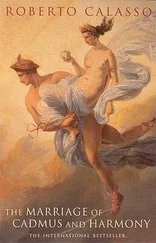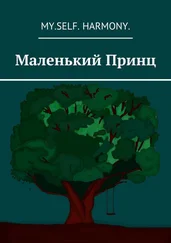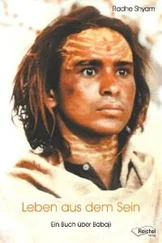I am deeply obliged to friends for providing photographs which illustrate the chapters: to Robert Linn for the painting of Shri Babaji on the cover of the 1990 edition; to Paramananda; to Anton Waelti; to Rajendra Kumar Sharma; to Deborah Wood; to Ram Singh Sammal; to Arun Vora; to Roland and Gertraud Reichel; to Lisetta Carmi; and to Balbir Singh Sethi. I regret that I do not know who took the other photographs.
I bless Jackie for buying the book that gave us our first knowledge of Babaji. I thank my brother Arthur Swan for reading the manuscript several times and especially for a thorough and helpful critique of a near-final draft of the book. I thank Sita Rami for leading me to Babaji and for her constant support of this project. I acknowledge a great debt to Ram Dass (J.D. Marston) and Ramloti (Deborah Wood) for the growing experiences we shared in establishing an ashram in Crestone, Colorado, based on Shri Babaji's teachings, schedule and methods. And I thank all the members of the American Haidakhan Samaj and the Loving Relationships Training who participated to any degree in that experience.
Crestone, Colorado, July 1990
FOREWORDS
FOREWORD TO THE SECOND EDITION
Since the first publication of "I Am Harmony", in 1990, the book has gone around the world with its account of Shri Babaji's most recent ministries and teachings on Earth. "I Am Harmony" has been translated and published in Bulgarian, Croatian, German, Italian, Japanese, Korean, Polish, Russian, Slovenian and Swedish; it has been translated into Dutch and is awaiting publication; and it is in process of translation into Latvian and Serbian.
With the original printing exhausted, the American Haidakhandi Samaj has authorized and supported the republication of the book in a new format. The new format allows the inclusion of additional and different photographs from many people, most of whom are mentioned in the earlier forward or are unknown. I would like to thank Emam and Ramloti for their contribution of several of the color images in this new edition. The 2006 reprinting of "I Am Harmony" contains few other changes: the story of Shri Babaji's ministries in the past two centuries has not changed since "I Am Harmony" was published in 1990. For this edition, the first chapter of the 1990 edition was trimmed and moved to the last chapter in the current printing, and a few typographical and other errors have been corrected.
Thought was given to up-dating this edition to reflect what has been accomplished by Shri Babaji's followers since His Mahasamadhi, but that is a whole new story. You can learn some of that story by going to the listing of Babaji ashrams and centers around the world, which has been added to the information sections at the end of the book. Their websites offer a good deal of information.
FOREWORD TO THE FIRST EDITION
Paramahansa Yogananda called Mahavatar Babaji the "Yogi-Christ of modern India." The Haidakhan worship service describes Babaji as "Supreme Guru, Lord of mercy", "King of sages" and "Lord of the universe."
This book is about Babaji 1, a great manifestation of The Divine Who has a history of appearing in a flesh-and-blood human form throughout the course of human civilization to help humankind understand, experience and achieve its relationship to The Divine. The tradition of Babaji's manifestations is that He appears in remote places at varying intervals in time - especially when humanity is undergoing major changes and challenges that have a potential for purification and the elevation of the whole human race - and, by example and teaching, helps transform a few people who may be inspired to share the teachings and help humanity take a few more steps forward on the path toward conscious reunion with the Divine Source of this whole Creation.
His teaching is not sectarian, but is supportive of all religions that guide human beings toward a life lived in harmony with The Divine. The practitioner of any of the major religions of the world today can find inspiration and support in the life and teachings of Babaji. Babaji taught from the basis of the ancient, eternal truths, but He focused the teachings on present-day problems.
The experience of Divinity seems a rather rare thing in human lives these days. Many people believe that a relationship or communication with an aware Creator is impossible. But, unless we totally discredit the experiences and statements of thousands of saints and holy men and women of all ages and all religions, it must be acknowledged that some people have seen, heard, or otherwise experienced The Divine in some way.
There is a mythology of Babaji in the Himalayan regions that reaches back into very early human civilizations. Paramahansa Yogananda's "Autobiography of a Yogi" 2, published in 1946, introduced the stories and experiences of Mahavatar Babaji to the West in a book which dealt mainly with people's experiences of Him between 1861 and 1920, in India. There are books written about a manifestation of Babaji as Haidakhan Baba in the period of about 1890 to 1922. And now there are books written about the manifestation of Babaji which was experienced by many thousands of people in the period from June 1970 to February 14, 1984. This book collects and shares some of the stories from the long history and focuses on the experiences people had of this latest manifestation of Babaji. People still encounter Babaji in various ways all over the world. These experiences are by no means limited to India or to that physical manifestation of Babaji which 'died' on February 14, 1984.
Babaji is a spiritual being who serves constantly as a link between the Formless Divine and the physical creation, between God and humankind. He states that He is a manifestation of Lord Shiva, one of the names India gives to The Divine - a form of God known as a renunciate, a helper, and the greatest of Teachers. There are a number of stories (some of them in this book) which attest to His ability to create forms - either astral or flesh-and-blood human - at will. On one occasion, He told a devotee who had knowledge of His having been seen and experienced in three widely-separated places in India on the same day, that He could be seen in as many as eight forms at the same time. Some people who have experienced one or more of the forms of Babaji have come to the belief that there are five forms of Shiva (see the frontispiece which gives one commonly-pictured form of the five-faced Lord Shiva) involved with Earth at any given time. One is usually to be found in Nepal in an "old" form and another in a "young" form; one is often present as Haidakhan Baba; one may be elsewhere in India; and a fifth may be in a spirit or astral form. And all of these forms come and go at will. Such is the experience and belief of many people in the Kumaon Hills.
Each of the forms, when encountered in the flesh, in dream, or in vision, has divine attributes. Always, Babaji appears to give some form of blessing or teaching. There are many experiences of people (some are related in this book) which give evidence of what we would call miraculous powers exhibited by Babaji. Even if you wish to discount or discredit such experiences, He remains an unusual and unusually powerful character who fulfills the predictions and declarations that He comes into human society to serve and to teach. He does not make an issue of His divinity. It helps in the transmission of His teachings if the disciple acknowledges that divinity, but He accepts any honest seeker of Truth who is ready and open to learning and spiritual growth.
People saw Him in many roles - as Lord Shiva, the Supreme Guru, purifier, friend, the Divine Child, the Divine Mother, Divine Father, Supreme Yogi, a healer, an Immortal. He is all of those things and we see in Him that for which we look. We also see ourselves in Him, for He mirrored each of us, so we could see where we were on our Paths and gain insight into ourselves and what we needed to work on. He is a great Teacher and Guide, working on each individual who is open to Him, while still managing to give a cohesive program to all who come to Him.
Читать дальше












